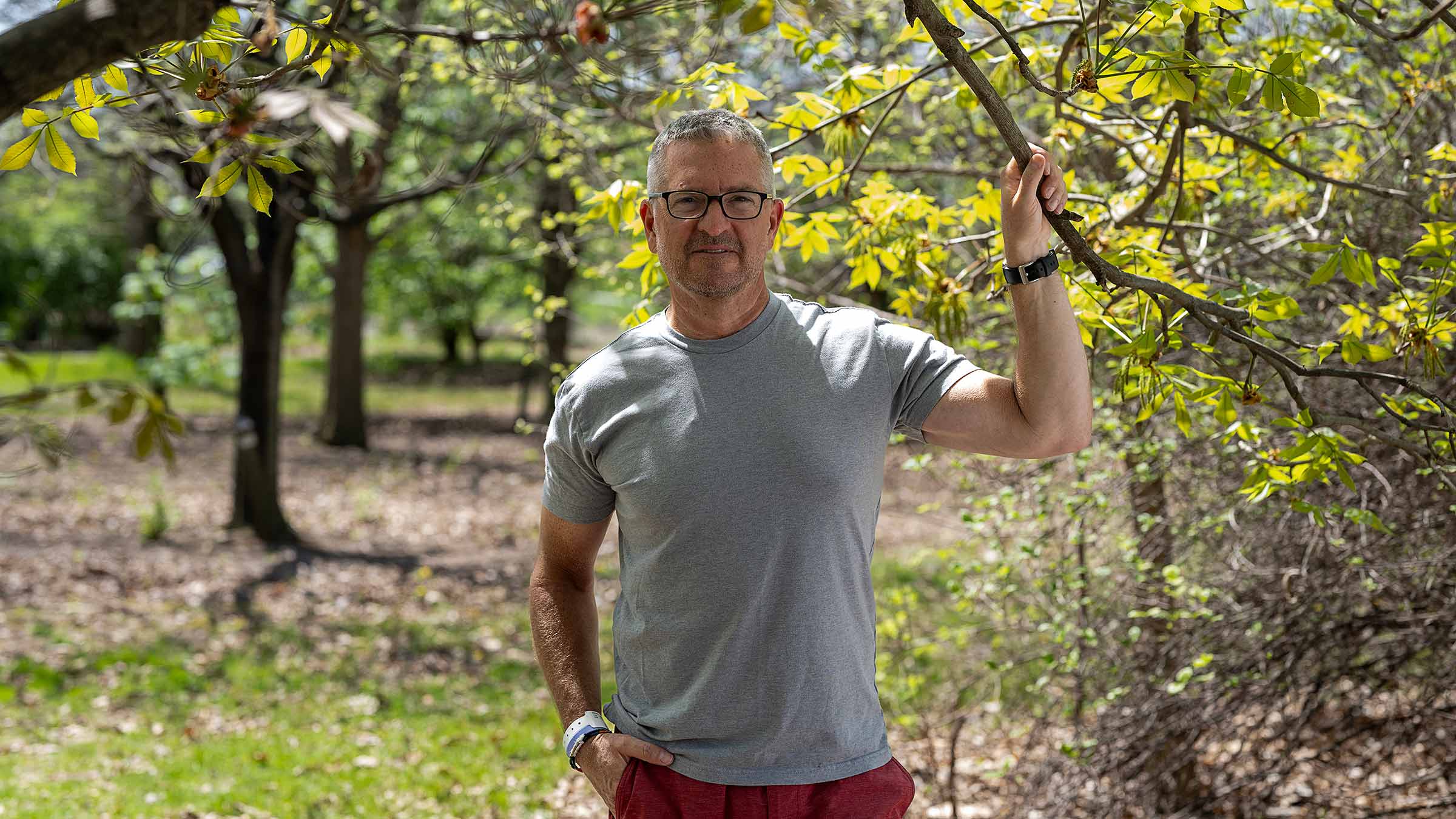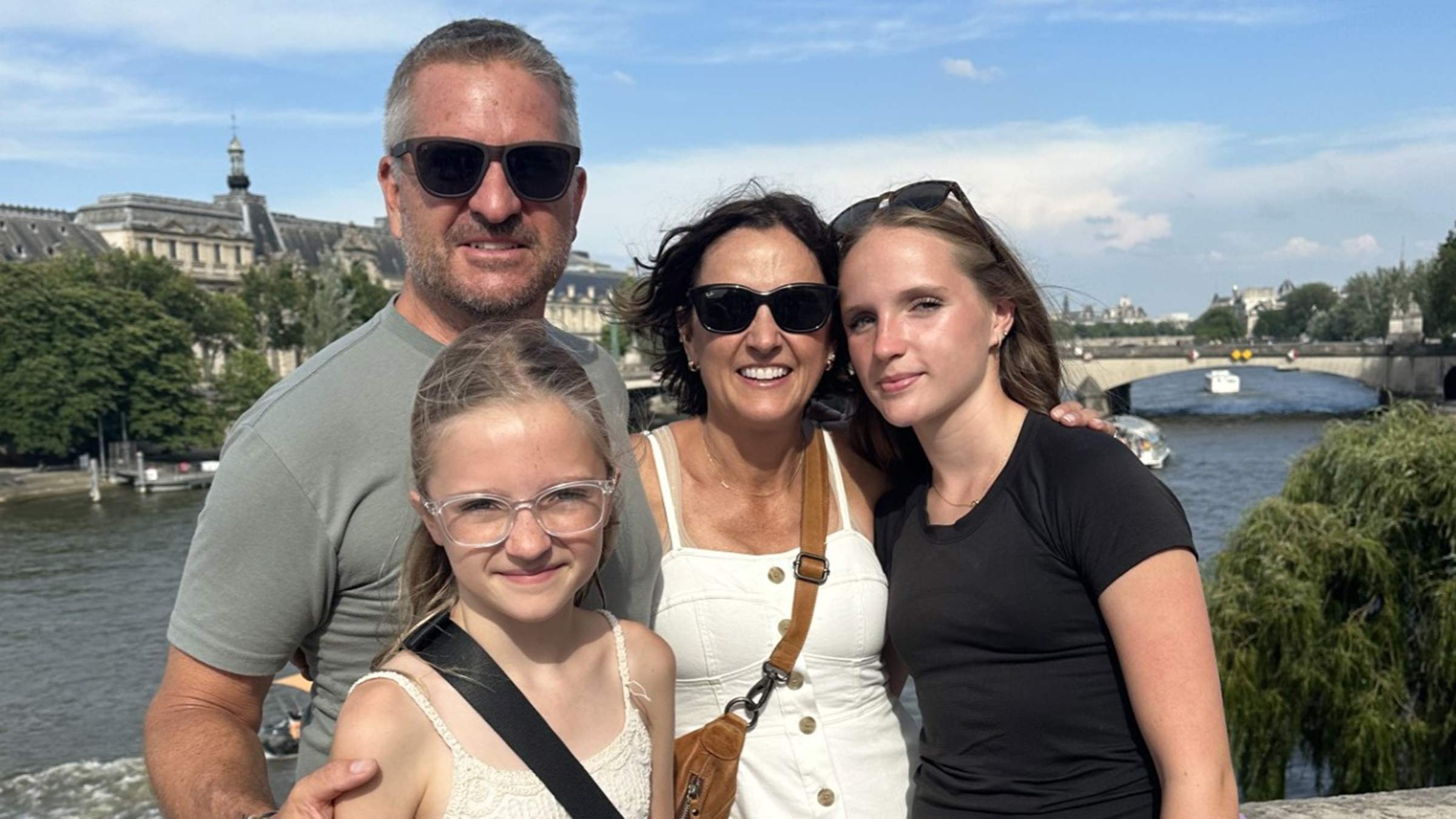Indiana man finds promising solution for esophageal cancer at Ohio State
A cancer diagnosis left Brian Bognar reeling until an Ohio State surgeon offered an alternative to traditional surgery.
Though Brian Bognar dealt with acid reflux much of his life, it was never severe until a family trip to Chicago during the fall of 2023.
Stomach acid seemed to stay in his throat. He couldn’t eat. He couldn’t sleep.
It was the only sign of what he would discover several months later: cancer in his esophagus.
Finding out just after Father’s Day in 2024, Brian and his wife, Erin, dove into online searches. Everything they read made his chances of surviving cancer of the esophagus seem grim.
“I was antsy. I wanted answers,” Brian says. “I wanted good news.”
Good news wouldn’t come for a while. Meanwhile, he and his wife didn’t want to alarm anyone, certainly not without a plan for being treated. For several weeks, they didn’t tell their two daughters, their relatives or friends.
“It was all we could think about,” Erin says. “And yet we carried on without mentioning it to the people closest to us. It was almost as if we were leading double lives.”
At the time, their daughters were 11 and 13. Brian was 51.
“I still considered myself young,” he says.
And yet, he wondered: Will I live to see my daughters grow up and go to college?
The first warning sign of esophageal cancer
In his early 20s, Brian was diagnosed with ulcerative colitis, a chronic inflammatory bowel condition that can cause ulcers in the intestines and oftentimes, acid reflux.
A few months after Brian’s family trip to Chicago, he talked to his gastroenterologist, who had him undergo an endoscopy to see inside his digestive tract.
The results showed a growth at the base of Brian’s esophagus, the tube that connects the throat to the stomach.
“The tumor had grown into the muscle wall of my esophagus, creating a pretty big concern about how fast it would spread,” Brian says.
In search of the best cancer treatment plan
Before deciding on a treatment plan, Brian and Erin wanted to hear their options. They met with doctors at Indiana University Hospital near their home north of Indianapolis, and at the Mayo Clinic.
Doctors in both hospitals recommended chemotherapy and radiation, then a surgery to remove Brian’s esophagus and reconstruct it using his stomach tissue. After the surgery, he would be on a feeding tube during a long recovery.
“That was not what I was expecting to hear,” Brian says. “They explained it was my best chance for a cure.”
Two of Brian’s friends suggested he meet with Desmond D’Souza, MD, a thoracic surgeon at The Ohio State University Comprehensive Cancer Center – Arthur G. James Cancer Hospital and Richard J. Solove Research Institute (OSUCCC – James). Dr. D’Souza offered Brian an option the other two institutions had not: a minimally invasive, robotic-assisted surgery to remove the cancer and remake his esophagus. Robotic surgery would allow Brian to recover more quickly than after a traditional open surgery. And important to Brian, he wouldn’t need a feeding tube for any amount of time after the surgery.
Smaller incisions, less pain, quicker recovery, no feeding tube — that all resonated with Brian, a sales executive at Microsoft who’s always been interested in the newest technology.
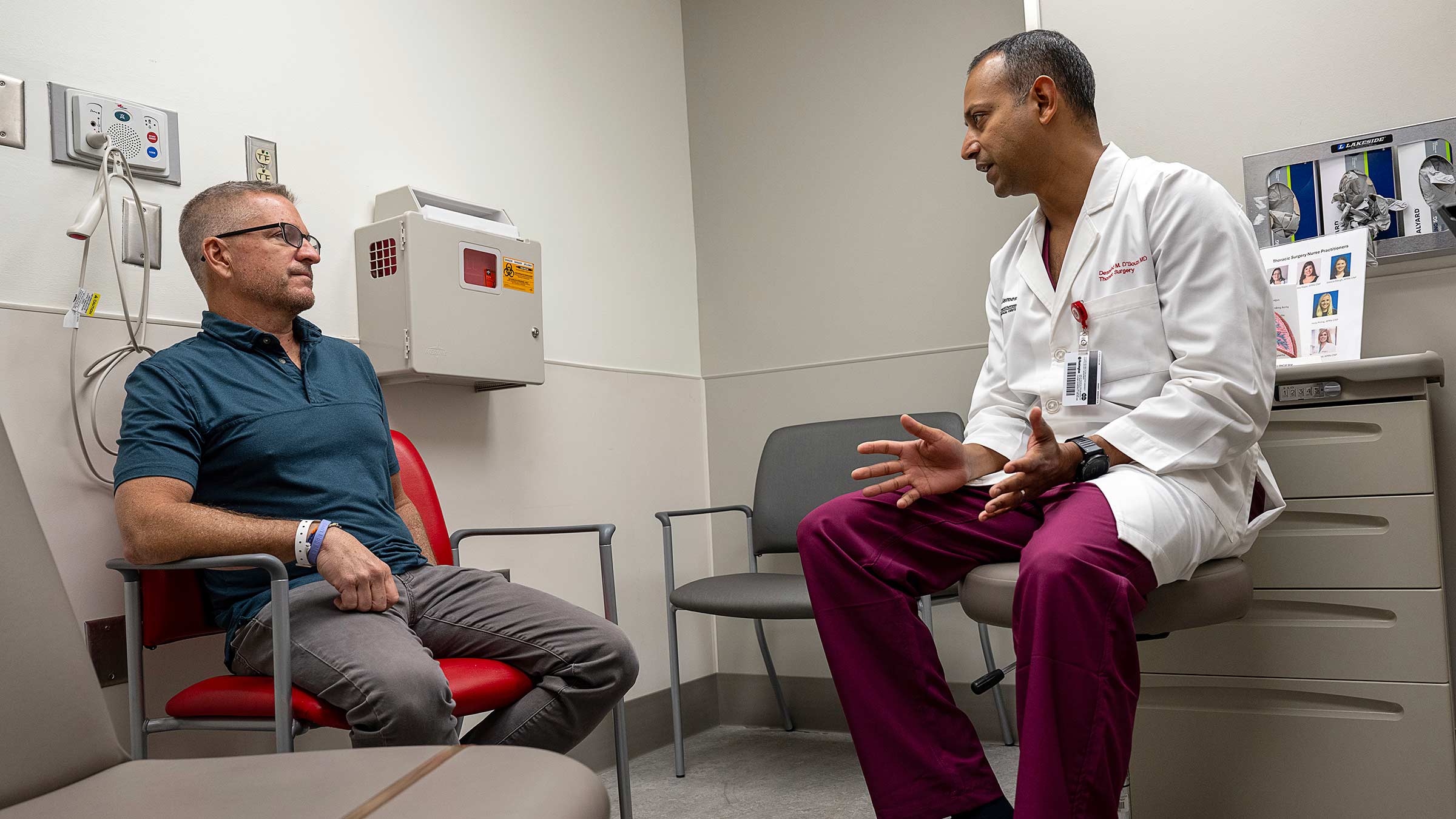
‘You’re going to be OK’
Dr. D’Souza, an associate professor of Surgery at The Ohio State University College of Medicine, had trained other surgeons in robotic surgery, including at the Mayo Clinic. Along with that expertise, he offered Brian and Erin hope.
“He was the first doctor who told me, ‘You’re going to be OK. This is something we can deal with. You’re healthy enough. You’re young enough. You’re going to be OK,’” Brian says.
Brian and Erin walked out of the appointment, and while still in the parking garage, Brian turned to his wife and said, “I think we’ve just made our decision.”
“I often have to talk patients off the ledge the first time I meet them,” Dr. D’Souza says. “When you hear you have esophageal cancer, the first thing you do is get on Google and look at the five-year survival rate, and it looks abysmal. You have kids, and you wonder: ‘Am I going to be around for my daughter’s graduation? For my son’s wedding?’ And statistically, the answer seems to be no.”
If cancer of the esophagus hasn’t spread beyond the original tumor, the average survival rate five years after diagnosis is 48%. That drops to 28% if the cancer has spread to other organs.
“But there are always outliers,” Dr. D’Souza says of people whose odds of surviving beyond five years may be low, but who live long past that. “As treatments improve and surgeries continue to evolve, your chance of being an outlier is much better.”
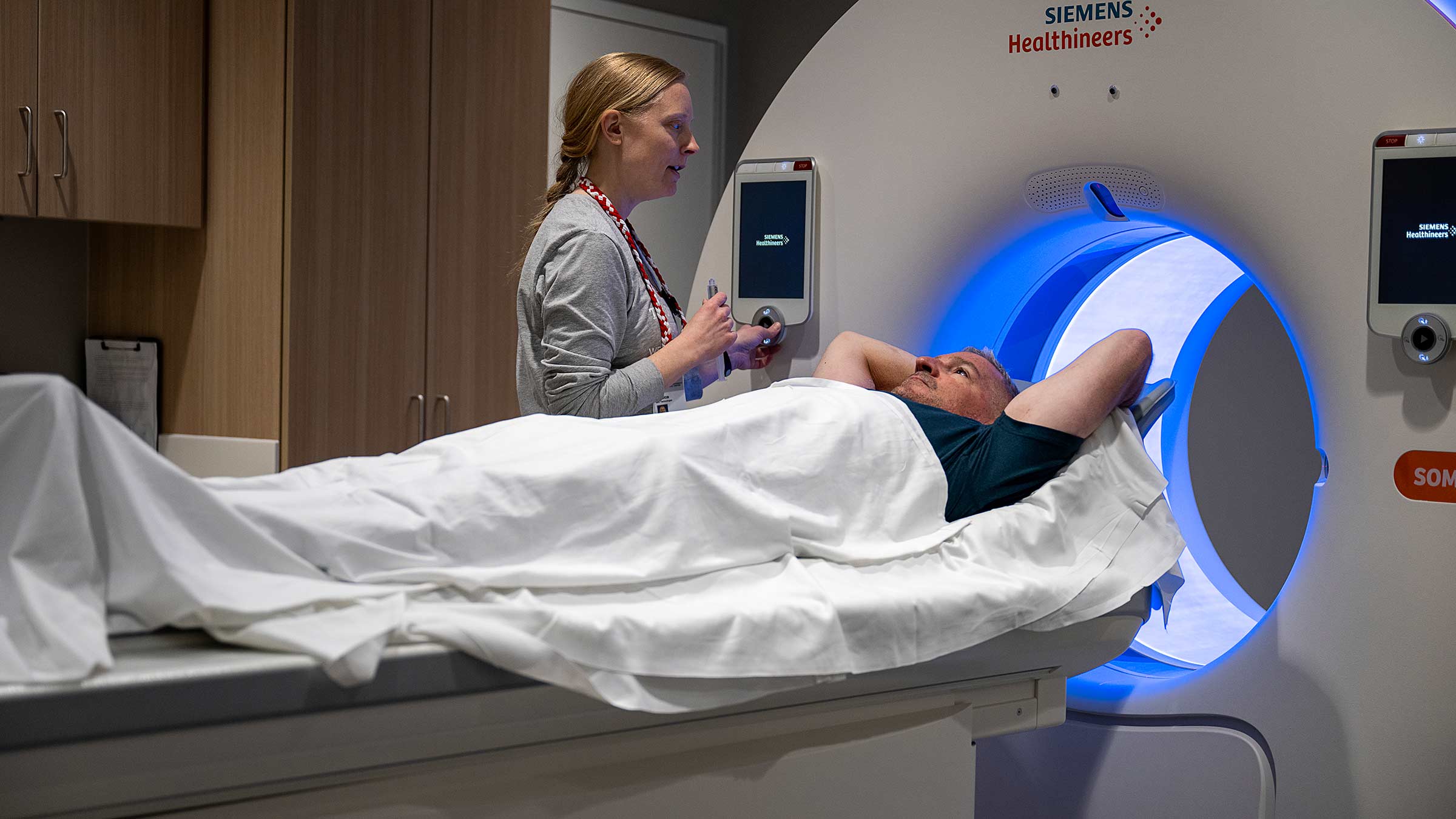
A complex and high-risk surgery
Unlike for many other cancers, there’s no annual screening for cancer of the esophagus. The cancer can grow and spread for a while without any symptoms. As such, people can often be unaware they have it until the cancer has advanced, and they have trouble swallowing or severe acid reflux.
In the United States, the top three causes for esophageal cancer are smoking, heavy alcohol use and uncontrolled acid reflux, Dr. D’Souza says.
“The vast majority of patients who struggle with acid reflux will not develop esophageal cancer. Only a small portion of them will, if it goes uncorrected,” Dr. D’Souza says.
If the esophagus is chronically exposed to acid, that can change the tissue lining it and make it easier for cancer cells to grow there.
Esophageal cancer surgery is complex. It often requires taking stomach tissue and using it to make a new esophagus and connecting that to the throat and stomach, Dr. D’Souza says.
“You’re reconstructing the stomach into an organ it was never designed to be, and you’re putting it into a body cavity it was never designed for, in a patient who may be frail and malnourished from not being able to swallow,” he says.
Bleeding, infection, difficulty swallowing and other problems make it a risky surgery.
Still, Dr. D’Souza has seen so many people recover from the surgery and live for many years afterwards.

‘A complete response’ to treatment
In Brian’s surgery, Dr. D’Souza guided a robot, which can move like a human hand that has a much greater range of motion. The robot can make cuts that can be much narrower, which reduces trauma on the patient.
Through these small incisions, Dr. D’Souza was able to remove the cancerous part of Brian’s esophagus and create a new esophagus using his stomach tissue. He was left with a stomach about half the size of the original. Over time, it will expand a little.
Before the surgery, Brian went through chemotherapy and radiation. Those treatments killed the cancer off entirely, leaving no living cancer cells in the tumor that was removed.
“We were surprised,” Dr. D’Souza says. “There were no viable signs of cancer. That’s considered a complete response.”
Only about one-third of patients are that lucky.
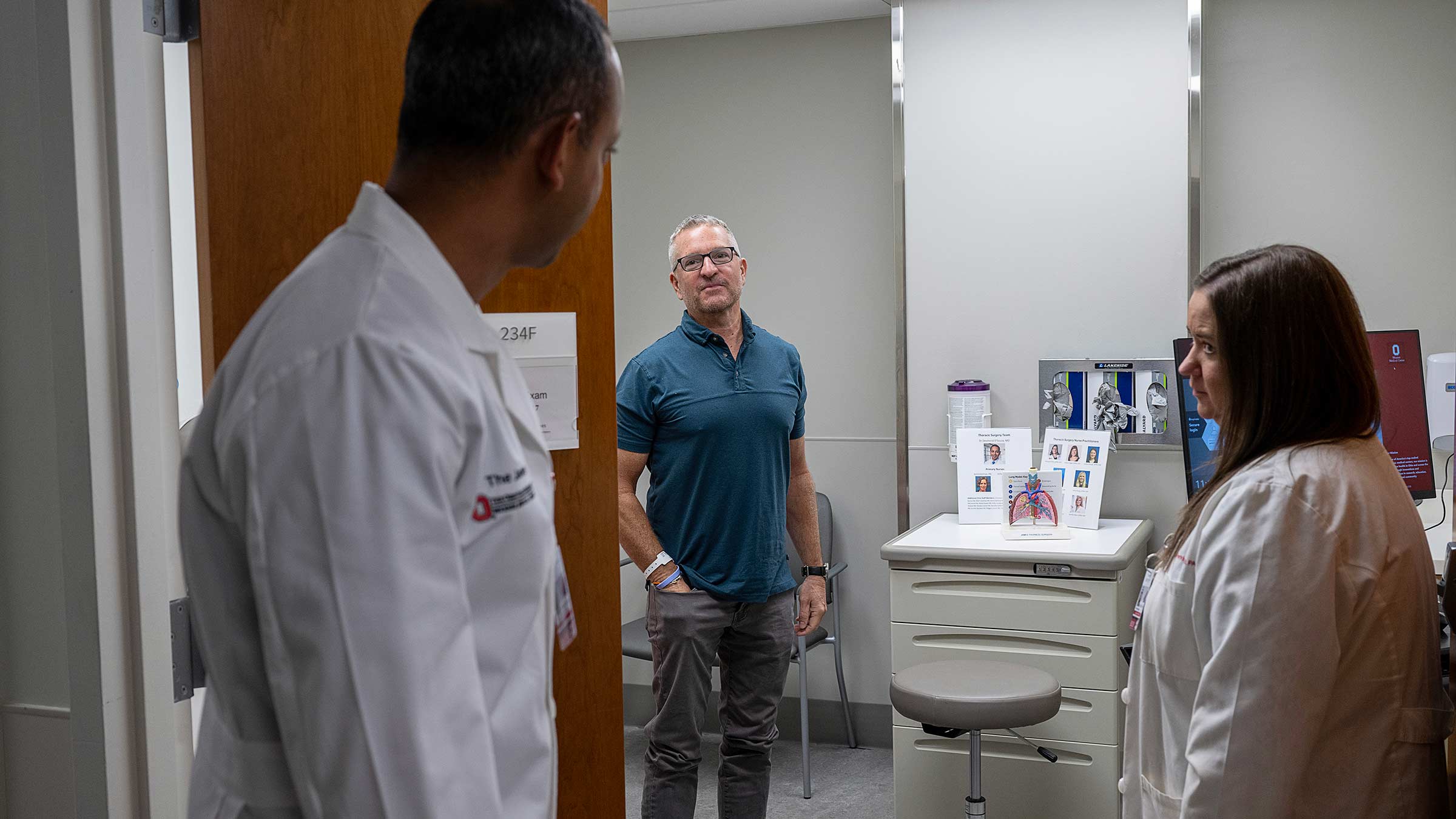
A fast recovery
During the first four days after the surgery, Brian couldn’t eat. He could only receive fluids intravenously. Then on the fourth day, he did a swallow test to see if the water he drank would go down his new esophagus and reach his stomach. Passing the test, Brian could move on to smoothies, then soft foods. After a week, he started feeling better.
“When I came home, I was able to function and be a part of family events, take my kids to where they needed to go. That made me feel helpful at home again and part of everything,” Brian says.
Just about a month after the surgery, Brian and his family stood in a pool in Hawaii. He took a picture on his phone and sent it to friends. When they got it, they couldn’t believe Brian had recovered so quickly to be traveling. They called it a miracle.
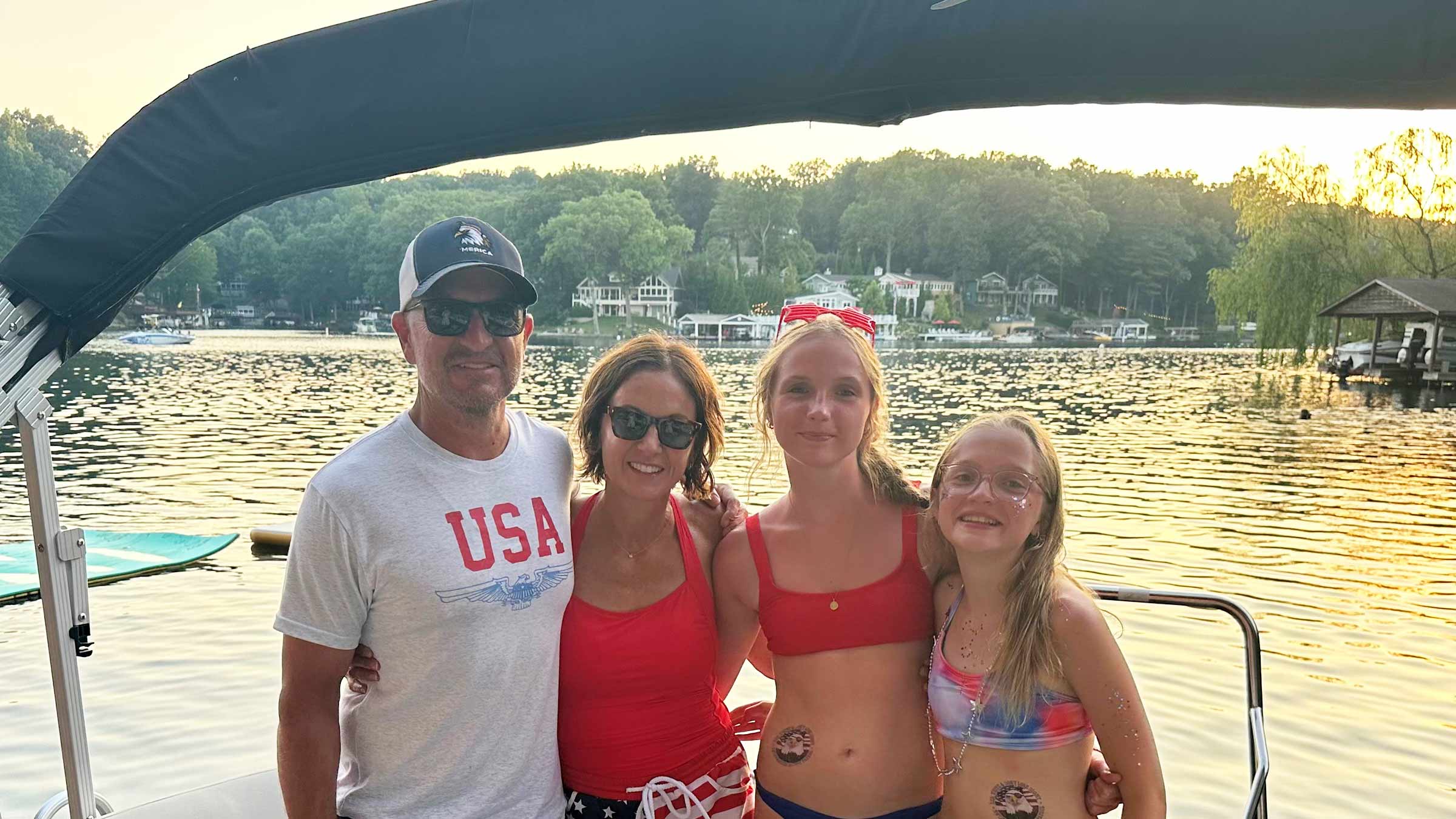
A Notre Dame fan’s gratitude for Ohio State
Having a smaller stomach, Brian now tries to eat six small meals a day, at most six ounces per meal. Slowly, he’s regaining the 25 pounds he lost, and trying to build back muscle by lifting weights.
At night, he needs to sleep at an angle to keep food and liquids he’s had from moving into his windpipe.
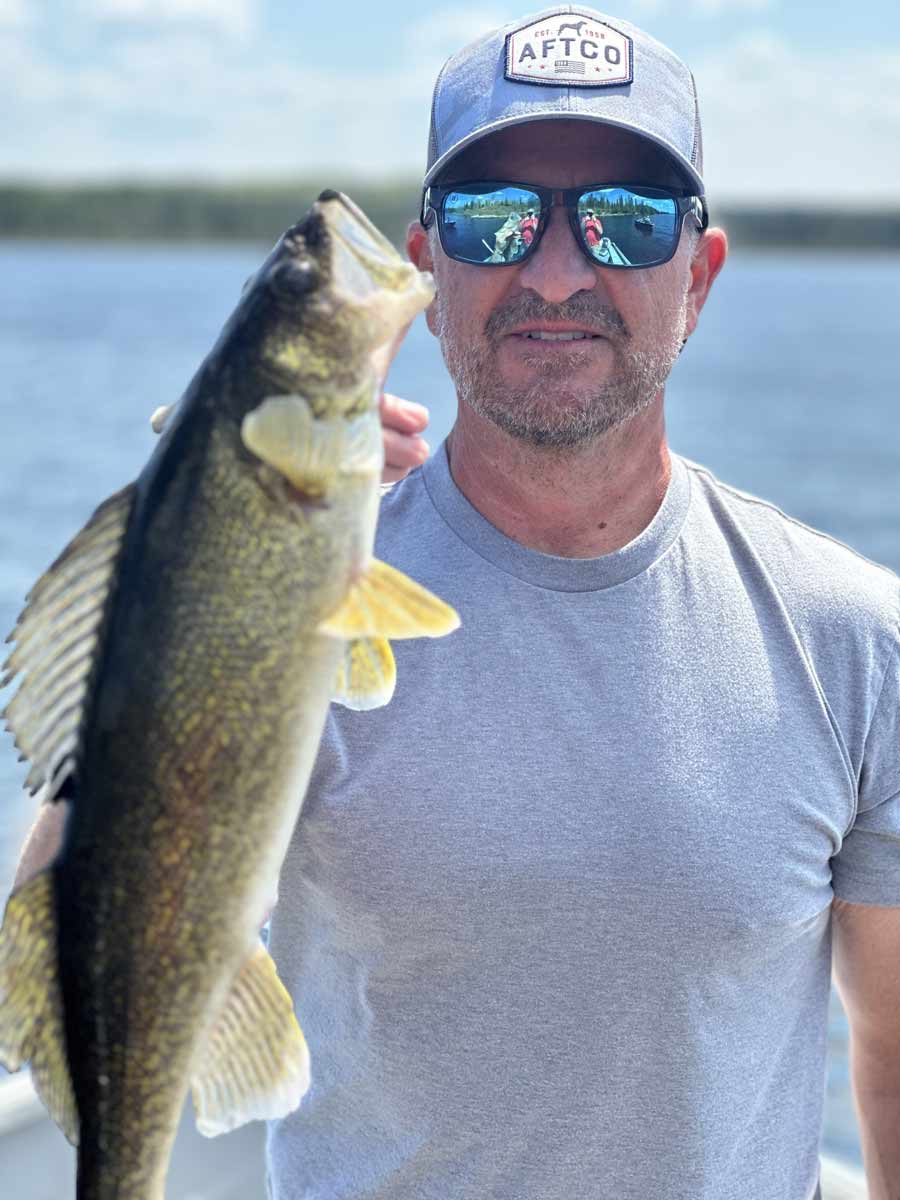 Every three months, he has scans of his chest area.
Every three months, he has scans of his chest area.
These are all small adjustments, the way Brian sees it.
“I went from, ‘Is this going to kill me?’ to having a complete response to treatment. I went from the lowest of lows to needing to watch what I eat and drink. It’s not the end of the world,” he says.
Having survived cancer led to another change.
Being from Indiana, Brian has long been a fan of Notre Dame. He never rooted for The Ohio State Buckeyes, never wanted to. He’s still a Notre Dame fan. But now he has a soft spot in his heart for the institution he credits with why he’s still alive today, still spending weekends in a boat, fishing or untangling the lines his daughters cast as they learn their dad’s favorite pastime.

Accurate, early cancer diagnosis matters
The James Cancer Diagnostic Center gives patients direct, expedited access to diagnostic testing and consultation with Ohio State cancer experts.
Schedule an appointment today


